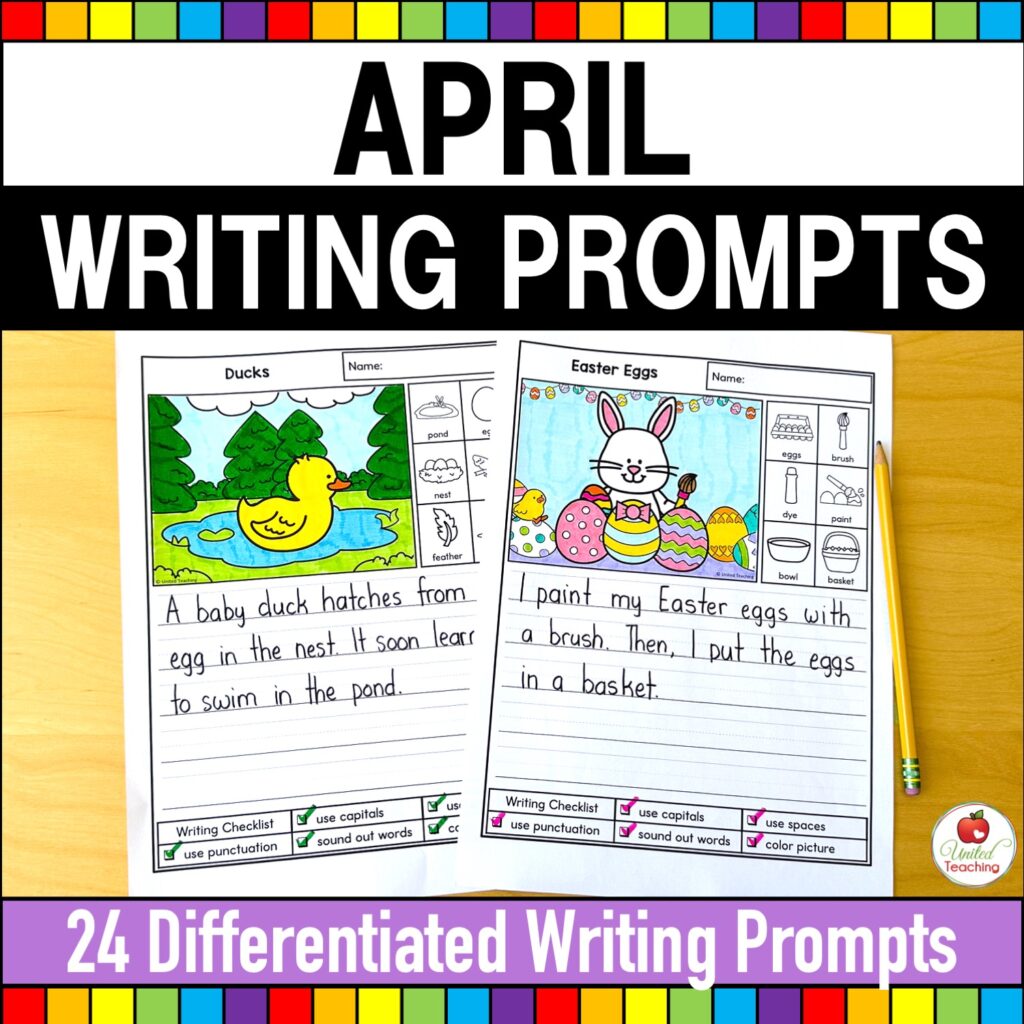Writing is an essential skill for young learners, but getting kindergarten students excited about putting their thoughts on paper can sometimes feel like a challenge. Many students struggle with coming up with ideas, forming sentences, or staying engaged in the process. That’s why having structured, spring writing activities can make all the difference in turning writing time into a fun and productive part of the school day.
April is the perfect month to refresh spring writing activities with new and exciting seasonal themes. With spring in full bloom, Earth Day around the corner, and Easter celebrations taking place, there are plenty of opportunities to inspire young writers. Let’s explore why writing prompts are valuable in the kindergarten classroom, the challenges they help address, and creative ways to use them throughout the month.
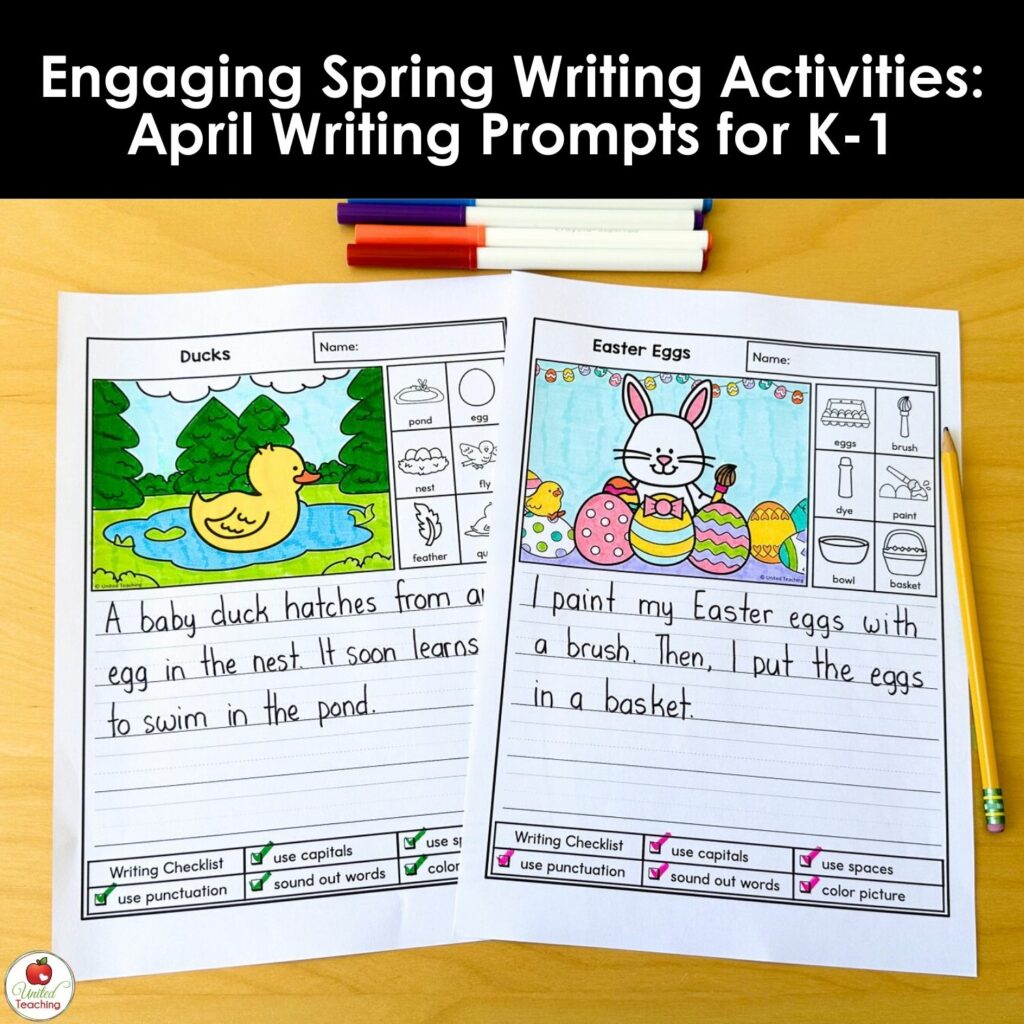
The Importance of Spring Writing Activities in Kindergarten
Writing prompts provide a structured way for students to develop their storytelling, fine motor, and sentence-building skills. Without guidance, many young learners find it difficult to know where to begin. They may struggle with coming up with ideas, spelling words, or even staying engaged long enough to complete a sentence. Writing prompts help remove those barriers by offering a clear topic, visual support, and a framework that matches each student’s developmental level.
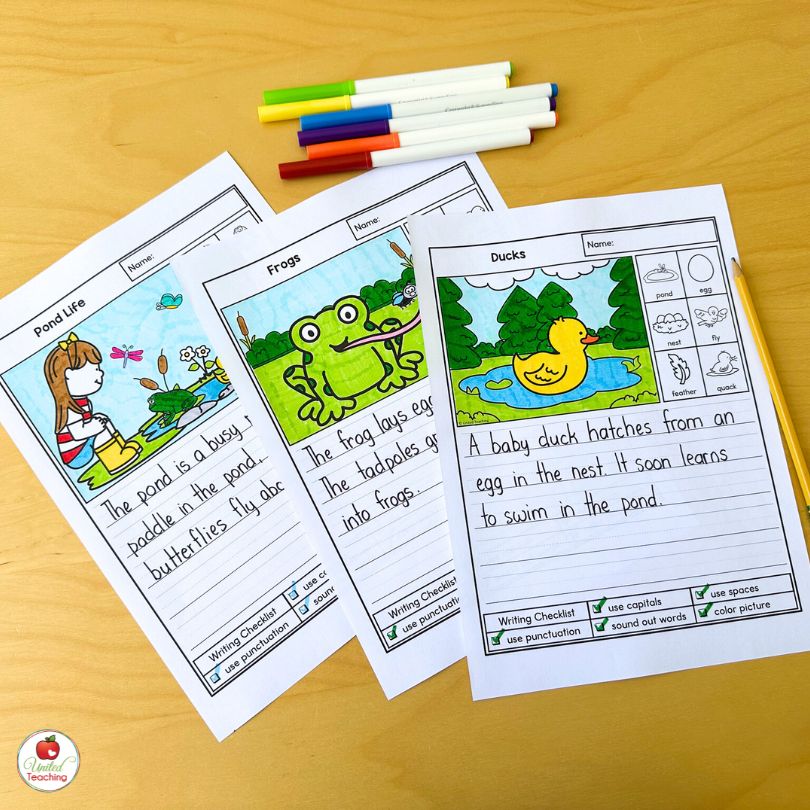
For kindergarten teachers, spring writing prompts also serve as a way to integrate literacy with seasonal learning. When students are already excited about a topic, such as finding Easter eggs or watching flowers bloom, they are more likely to feel motivated to write about it. A well-designed set of writing prompts provides enough structure to guide students while also allowing for creativity and independent expression.
Overcoming Common Writing Challenges in Kindergarten
Struggling to Come Up with Ideas
One of the biggest obstacles in early writing development is idea generation. Many kindergarten students freeze when faced with an empty page and no direction. Without guidance, their natural storytelling abilities may not translate easily to writing.
How Writing Prompts Help: April writing prompts provide engaging topics related to spring, nature, and holidays, giving students a starting point. Instead of staring at a blank page, they can dive into writing about experiences like planting a garden, visiting a farm, or seeing a rainbow after a rainy day. These familiar and exciting topics make it easier for students to organize their thoughts.
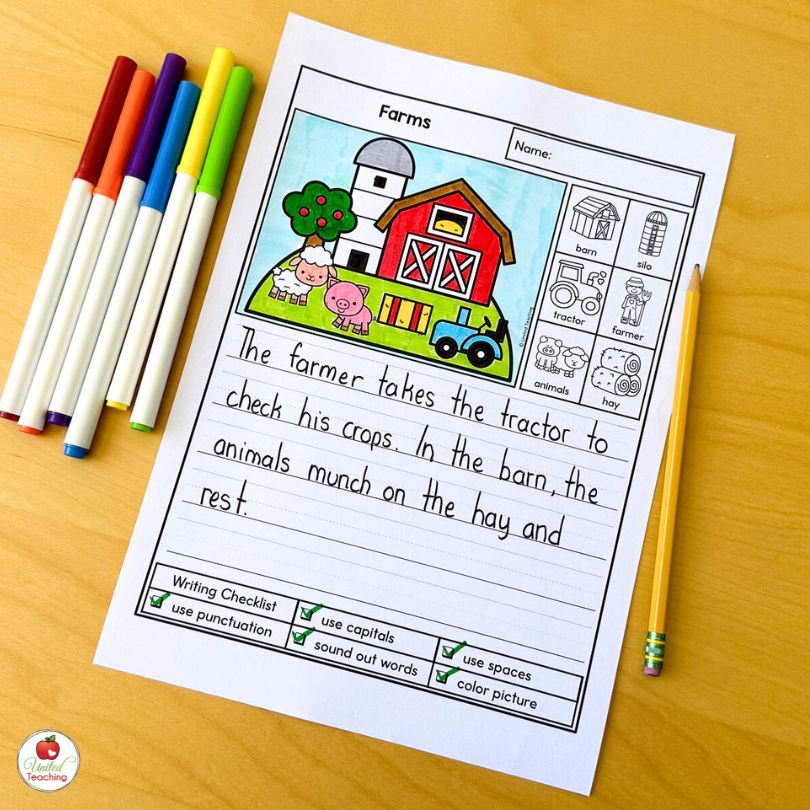
Differentiating for Various Skill Levels
In a kindergarten classroom, students are at different levels of writing development. Some are still working on letter formation, while others are beginning to write full sentences. A one-size-fits-all writing task may leave some students frustrated or unchallenged.
How Writing Prompts Help: A well-structured writing prompt packet offers differentiated support. For early writers, picture word banks provide assistance, while more advanced students can expand their ideas into full stories with a word list and writing checklist. This differentiation ensures that every child feels successful during writing time, no matter their skill level.
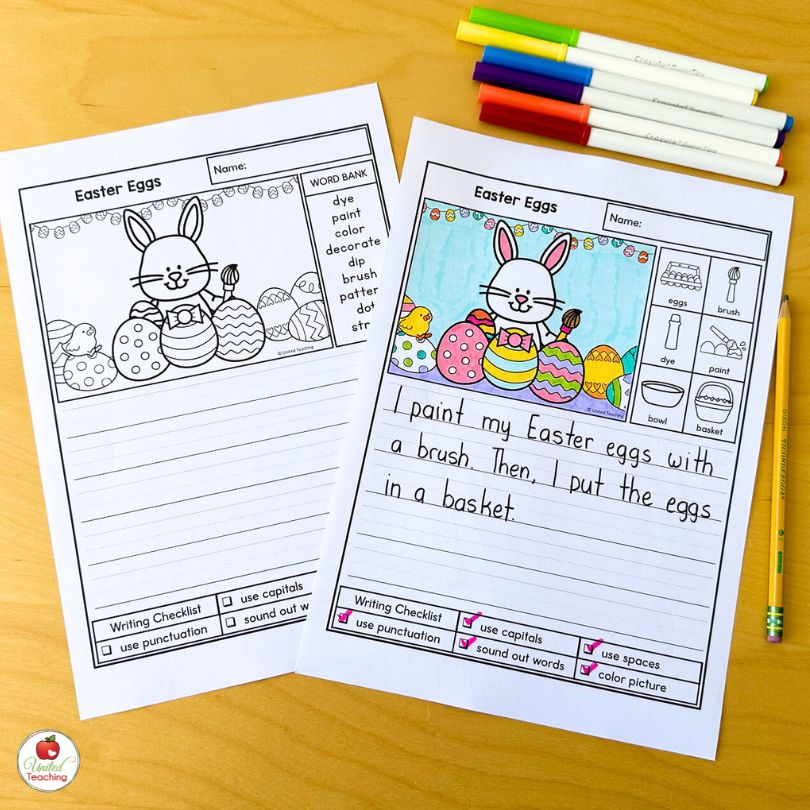
Keeping Students Engaged in Writing
Young learners often have short attention spans, and long, open-ended writing tasks can lead to frustration or disengagement. Without a clear structure, writing time can become unproductive.
How Writing Prompts Help: Themed writing prompts make writing feel more like an interactive activity rather than a chore. When students are asked to write about their favorite Easter candy, or imagine life on a farm, they stay interested and eager to share their ideas. The built-in visuals, vocabulary supports, writing checklist and engaging topics keep their focus throughout the activity.
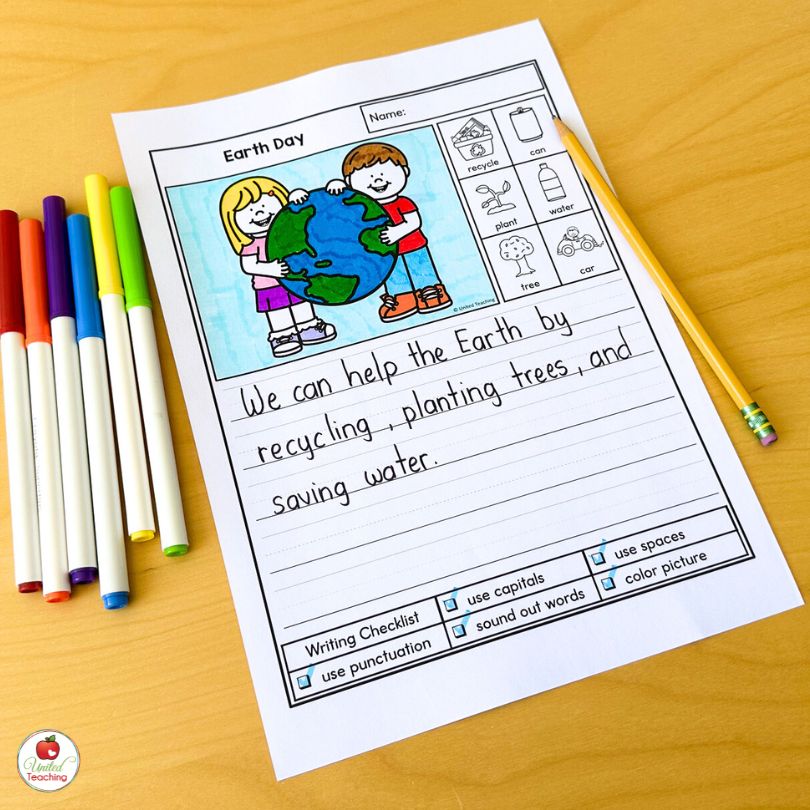
Spring Writing Activities to Inspire Young Writers
The April picture writing prompts cover a variety of spring-themed topics that connect with kindergarten students’ interests and real-life experiences. The following themes are included in the April Writing Prompts Packet:
- Spring and Nature: Topics like butterflies, flowers, ladybugs, and playing outside provide opportunities for students to write about seasonal changes.
- Easter and Celebrations: Writing prompts about the Easter Bunny, egg hunts, and favorite Easter treats allow students to engage in imaginative and personal storytelling.
- Earth Day and Science: With prompts focused on recycling, planting trees, and taking care of the planet, students learn to connect writing with environmental awareness.
- Farm Life and Animals: Writing about farm animals, ponds, and tractors helps students explore rural settings while expanding their vocabulary.
- April Fool’s Day Fun: A silly story prompt lets students tap into their sense of humor while practicing narrative writing skills.
Each writing prompt includes visual word banks to help students spell new words, writing checklists, and pictures to color or space for illustrations to encourage storytelling through both words and pictures.

How to Incorporate Spring Writing Activities into the Kindergarten Classroom
To make the most of these writing prompts, consider incorporating them into different parts of the school day. Here are some effective ways to use them:
Morning Work
Start the day with a structured writing activity that gets students thinking creatively. Writing prompts work well as an independent morning work task that allows students to transition smoothly into the school day.
Spring Writing Centers
Use writing prompts as part of a literacy center rotation. Provide a selection of prompts and allow students to choose which one they want to complete. This gives them a sense of autonomy while keeping them engaged.
Small Group Writing Instruction
For students who need extra support, use writing prompts in small group settings. Guided writing sessions allow teachers to model sentence formation, encourage phonetic spelling, and provide immediate feedback.
Early Finisher Activities
Students who complete their other work early can work on additional writing prompts. This ensures that early finishers remain engaged while giving them extra writing practice.
Seasonal Writing Journals
Collect student responses throughout the month and compile them into a spring writing journal. This helps track progress and gives students a sense of accomplishment as they see their writing improve.
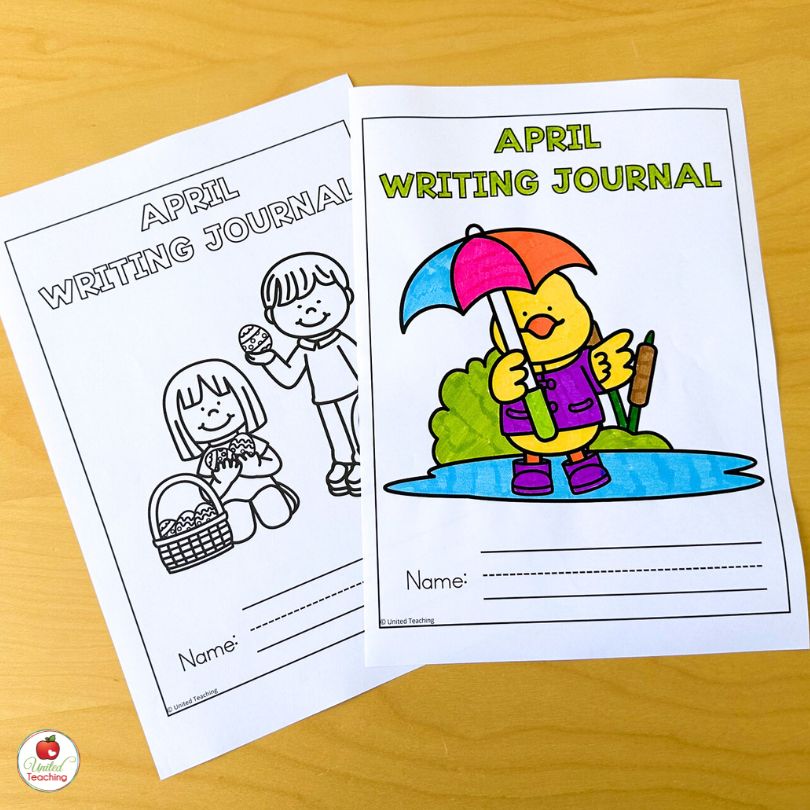
Encouraging Confidence in Young Writers
One of the most rewarding aspects of using writing prompts is seeing students build confidence in their abilities. At the beginning of the school year, many kindergarten students struggle with even the simplest writing tasks. By April, they are starting to recognize sight words, spell words phonetically, and form simple sentences. Writing prompts provide the structured practice they need to develop these foundational skills.
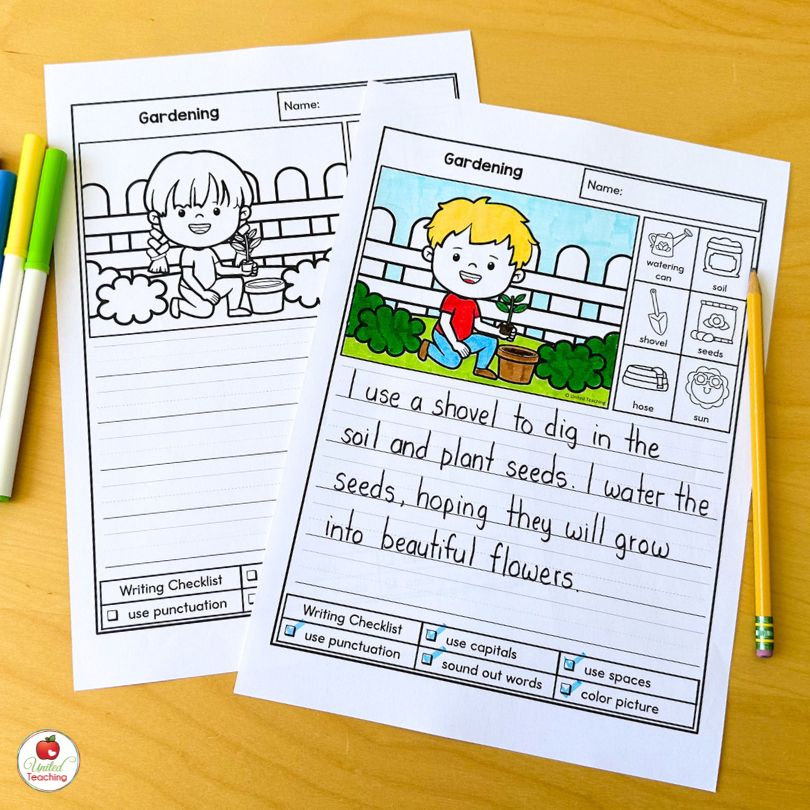
To further encourage confidence in writing:
- Celebrate their progress. Display student writing around the classroom or create a special “author’s chair” where students can share their work.
- Provide positive feedback. Focus on effort and improvement rather than perfection. Praise their ideas and encourage them to keep writing.
- Make writing fun. Use colorful paper, fun writing tools, and themed stickers to make writing activities feel special and enjoyable.

Transform Writing Time with Spring Writing Prompts
April is a month full of inspiration for young writers, and the right writing prompts can turn writing time into an enjoyable and productive part of the kindergarten day. By addressing common writing challenges, offering differentiated support, and incorporating engaging seasonal themes, these writing prompts help students develop their literacy skills in a meaningful way.
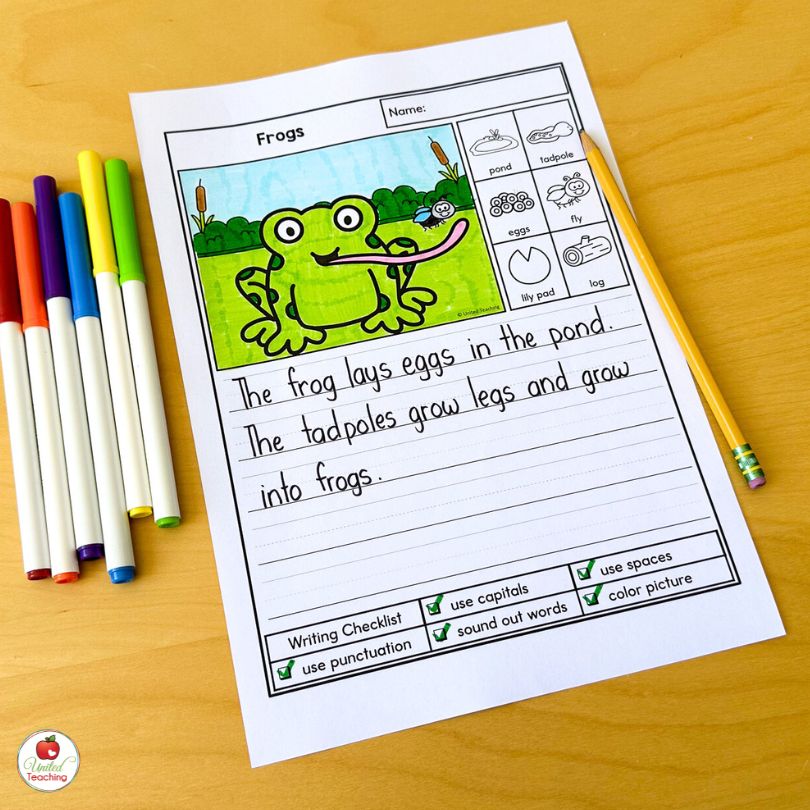
If you’re looking for a simple way to bring excitement and structure to writing time, the April Writing Prompts for Kindergarten packet is a perfect resource. With no prep required, teachers can focus on guiding students through creative and structured writing activities that build confidence and enthusiasm for storytelling.
Ready to make writing fun and engaging this spring? Bring these April writing prompts into your classroom and watch your students blossom into confident young writers.
